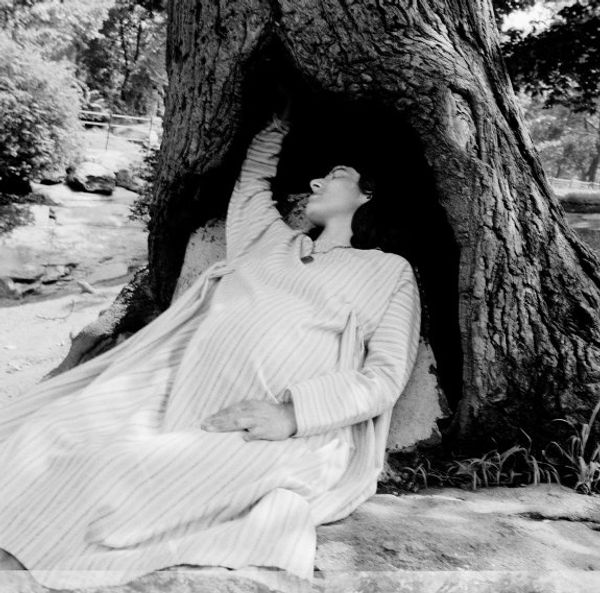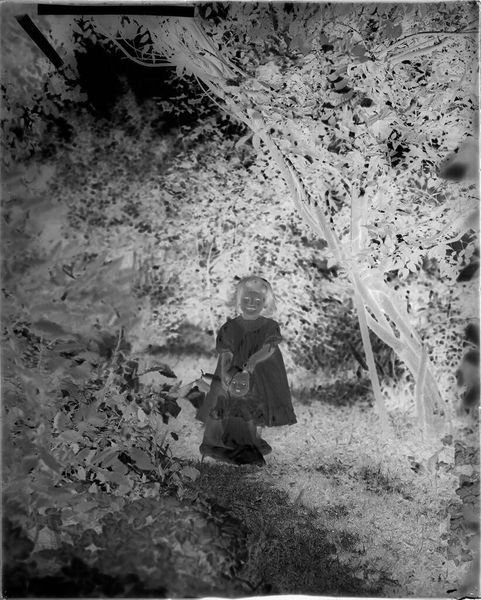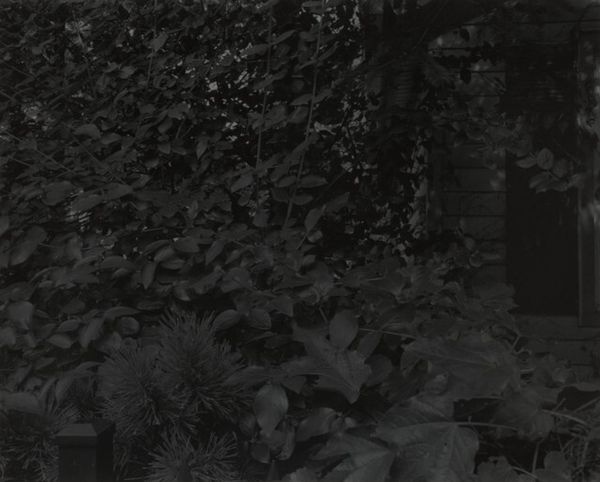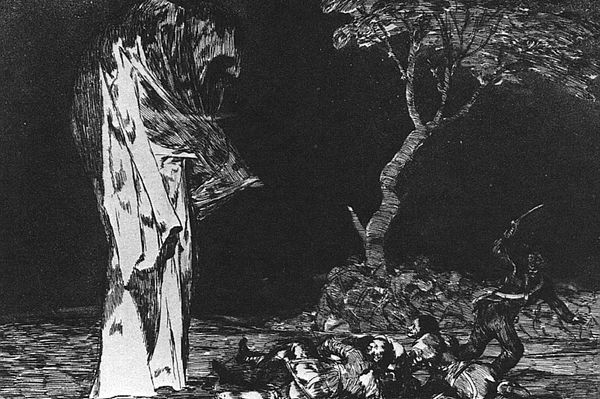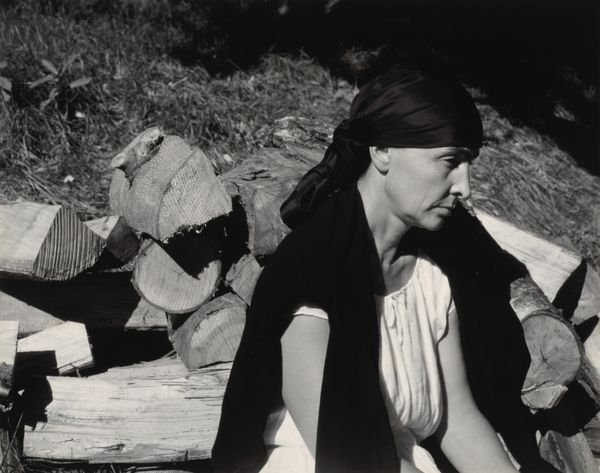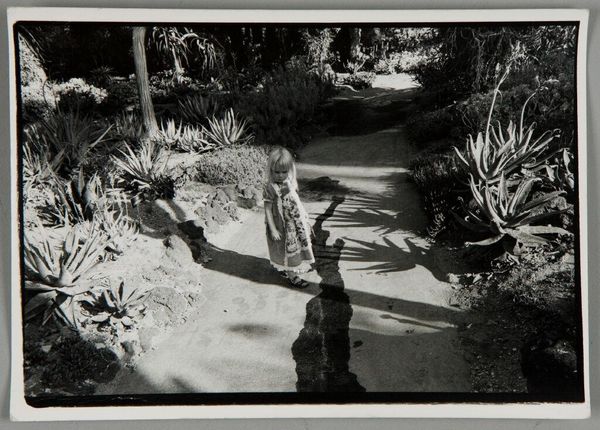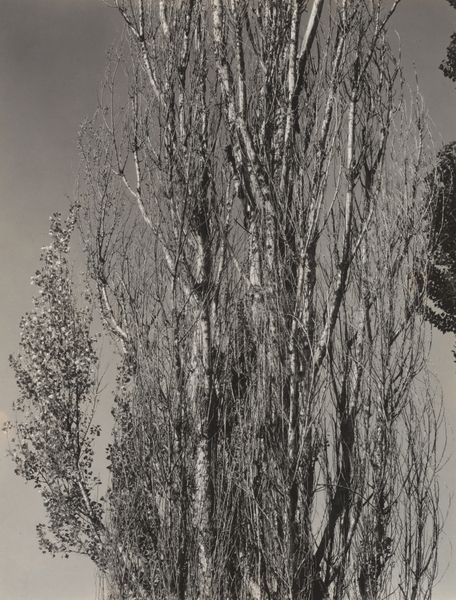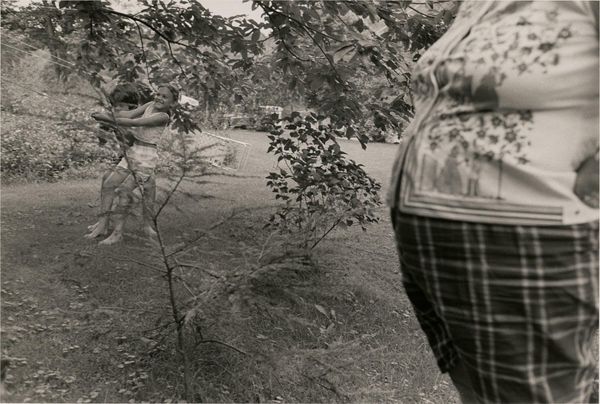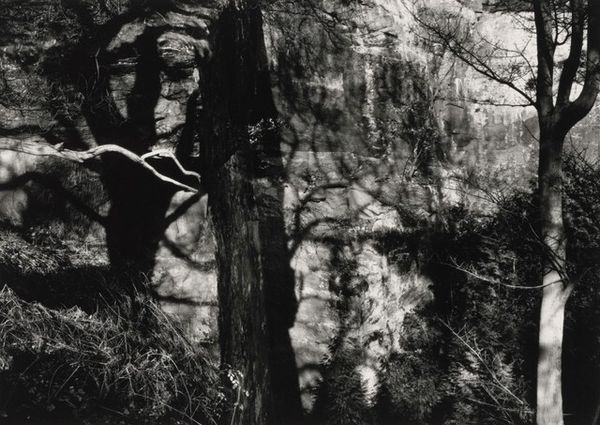
photography, gelatin-silver-print
#
portrait
#
black and white photography
#
black and white format
#
monochrome colours
#
photography
#
black and white
#
gelatin-silver-print
#
monochrome photography
#
monochrome
#
realism
Dimensions: sheet: 35.4 × 27.6 cm (13 15/16 × 10 7/8 in.) image: 32.5 × 21.4 cm (12 13/16 × 8 7/16 in.)
Copyright: National Gallery of Art: CC0 1.0
Editor: Here we have "Rusty," a gelatin-silver print, potentially from between 1986 and 1994, by Jim Goldberg. It’s striking, the monochrome palette creates such a stark mood. The subject, shrouded in a blanket amidst a dense woodland, has a definite presence. How do you interpret the formal elements at play? Curator: The composition immediately grabs one’s attention. The textures present in the bark of the trees and in the blanket provide a sophisticated interplay of visual tactility. The contrasts—light and shadow, the sharp lines of the foliage against the softer, draped form—invite the viewer into a process of visual exploration. What do you make of the application of the highlights, specifically as it relates to the subject? Editor: I notice the stark white markings on the subject's face. They're almost hieroglyphic and are perhaps heightened due to the overall grey scale. It's unclear if the photograph intends for these to contrast or harmonize with the textures. What are your thoughts? Curator: Precisely! The markings operate on multiple levels. They break the unity of the portrait through disjunction of plane; what do these disjunctions intimate in concert with the tonal arrangements across the field? They become another field upon which meaning and reading must be projected, they resist seamless entry, disrupting illusion. In this, the work engages modernist tropes through disruptions of the frame. Editor: That's fascinating. I hadn't considered it from that viewpoint. Looking again, I can see how the deliberate textural play and strategic deployment of contrasting features complicate what initially appears to be a simple portrait. Thanks! Curator: Indeed! Consider how photographic techniques shape meaning through framing, tone, and composition. With those considerations, we are closer to perceiving a language about affect in Goldberg’s portrait.
Comments
No comments
Be the first to comment and join the conversation on the ultimate creative platform.
